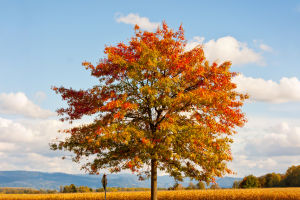You might have seen violets quietly dotting gardens or forest floors, but have you ever really stopped to appreciate their subtle charm?
These small, colorful flowers might not shout for attention like roses or sunflowers, but their delicate appearance and sweet scent have fascinated people for centuries.
What makes violets so special, and why have they earned a place not only in gardens but also in perfumery and culture? Let's take a closer look at the gentle world of violets and why they deserve more of our attention.
A Splash of Color in Early Spring
Violets are often among the first flowers to bloom in spring, bringing a splash of color after the cold winter months. Their range of colors—from deep purples and blues to soft whites and cheerful yellows—makes them versatile in any garden or natural setting.
This early blooming means violets have adapted to make the most of limited sunlight before trees leaf out fully. Their small size and ground-level growth allow them to capture light and thrive where larger plants might not yet have emerged. For gardeners, violets provide a natural, low-maintenance ground cover that adds beauty without much effort.
The Secret Language of Violets' Shape and Scent
Look closely at a violet flower, and you'll notice its shape is quite unique: five petals arranged in a way that's almost symmetrical, with a subtle curve that invites pollinators. This design isn't just for show—it's an evolutionary masterpiece to attract early pollinators like bees and butterflies.
The fragrance of violets adds another layer to their appeal. Many violet species produce a soft, sweet scent that has been prized in perfumery for centuries. The scent is light but distinct, often described as fresh, powdery, and slightly sweet. This delicate aroma is why violet extracts are commonly found in luxury perfumes, soaps, and candles.
Long Blooming Period: A Gift for Garden Lovers
One of the most appreciated features of violets is their long blooming period. Unlike flowers that open and fade quickly, many violets keep blooming for weeks, sometimes even months, depending on climate and care. This extended flowering time means violets provide a steady burst of color and fragrance throughout spring and early summer.
For anyone who enjoys gardening but wants low-maintenance beauty, violets are an excellent choice. They spread naturally, often reseeding themselves, and don't require much watering or fertilizer. Plus, their ability to thrive in partial shade means they can brighten spots where other flowers struggle.
How to Grow and Care for Violets
If you're interested in adding violets to your garden or indoor plant collection, here are some practical tips:
1. Light and soil: Violets prefer partial shade and well-drained soil. They can tolerate some sun but do best when shielded from harsh afternoon rays.
2. Watering: Keep the soil moist but avoid waterlogging. Violets like consistent moisture but don't want "wet feet."
3. Propagation: Violets easily propagate through seeds or by dividing established clumps. This makes them ideal for sharing with friends or spreading in your garden.
4. Pest control: Violets are generally pest-resistant but watch out for aphids or slugs in damp conditions.
These straightforward steps will help your violets flourish and continue to provide color and scent year after year.
Why Violets Matter: Beyond Beauty
Violets have more than just aesthetic value. Historically, they have been symbols of modesty, faithfulness, and delicate love. In literature and art, violets often represent humility and simplicity, reminding us that beauty doesn't always have to be loud or flashy.
Moreover, some violet species have been used in traditional remedies for their mild anti-inflammatory and soothing properties, though these uses require more scientific study for validation. The plant's presence in natural habitats also supports local ecosystems, offering food and shelter to insects and small animals.
Have you ever noticed violets on your walks or in your garden? What feelings or memories do they bring up for you? Their gentle presence might just be a quiet reminder that small wonders are all around us, ready to brighten our days if we take the time to notice.


